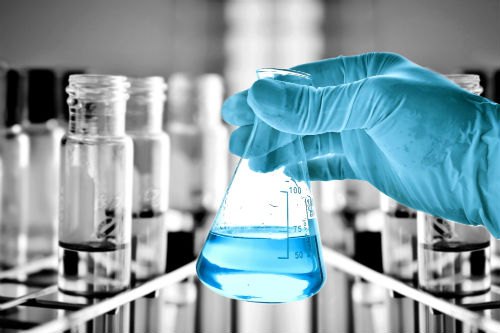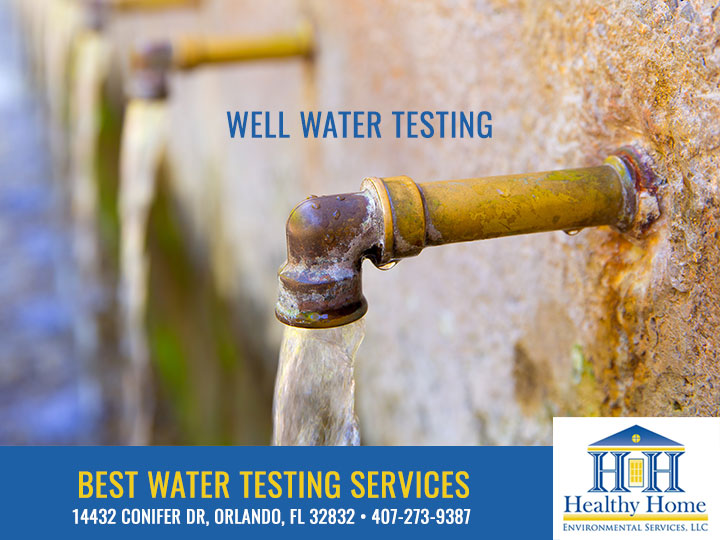The Relevance of Picking Water Testing Services Tampa for Your Wellness
The Relevance of Picking Water Testing Services Tampa for Your Wellness
Blog Article
Recognize the Significance of Water Screening in Preserving Compliance With Wellness Criteria
In the world of public wellness, understanding the relevance of water testing is vital for maintaining compliance with rigorous wellness criteria established forth by authoritative bodies like the That and EPA. What are the specific approaches used in water testing, and exactly how do they guarantee that our most vital resource remains unpolluted?
Trick Wellness Requirements for Water
Making sure the safety and security and high quality of drinking water is vital, as it directly affects public wellness. Stringent health and wellness standards are established to guard people from waterborne illness and impurities that can result in damaging health and wellness impacts. The World Health Company (WHO) and nationwide agencies like the Epa (EPA) in the United States established standards and regulatory limits for different physical, chemical, and organic parameters in alcohol consumption water.
These requirements are based on comprehensive clinical study and are occasionally examined to include brand-new searchings for and technological developments. Trick criteria include microbial impurities such as viruses and microorganisms, chemical toxins like lead and arsenic, and physical features such as turbidity and pH levels. Conformity with these standards makes sure that water is without damaging substances and is aesthetically pleasing to the customer.
Water screening plays a vital function in verifying conformity with these health and wellness standards. Normal monitoring and testing help recognize possible problems before they position a considerable health risk, enabling timely treatment and removal. By sticking to these requirements, water carriers can preserve public self-confidence in the safety of the area's water, consequently securing public health and wellness effectively.
Typical Contaminants Identified
When analyzing water quality, what are the most common pollutants that have a tendency to be spotted? Microbial virus, consisting of bacteria like Escherichia coli and protozoans such as Giardia and Cryptosporidium, are often located in water resources, posturing considerable health and wellness dangers if consumed.
Chemical pollutants are additionally a key concern. Nitrates, often resulting from farming plant foods, can cause severe wellness issues, particularly in infants. Heavy metals such as lead, arsenic, and mercury, normally presented with industrial release or natural mineral down payments, can have long-term hazardous impacts. Unstable organic compounds (VOCs) and pesticides, results of agricultural techniques and commercial tasks, further add to water contamination.
Not natural substances such as fluoride and chlorine, although occasionally deliberately included in water for health advantages, can become troublesome at elevated degrees. Finally, emerging contaminants, consisting of pharmaceuticals and individual treatment products, are increasingly being spotted, elevating concerns about their prospective influence on human health and environments. Addressing these impurities is vital for guarding public wellness and guaranteeing water high quality conformity.
Methods of Water Testing
Water testing's precision is vital for ensuring and determining contaminants safety and security conformity. Water Testing Services Near Me. To achieve precise results, different methods are used, each tailored to identify particular contaminations and align with regulatory standards. One widespread method is spectrophotometry, which measures the absorption of light by chemical substances in the water, consequently recognizing aspects like phosphates and nitrates. This approach is useful for its level of sensitivity and specificity.
Chromatography is an additional innovative technique utilized, specifically for organic pollutants. By dividing mixes into individual elements, it permits detailed evaluation of complicated toxins. Gas chromatography and liquid chromatography are commonly used variants, each suited for different compound types.
Microbiological screening is important for finding pathogens such as germs, viruses, and protozoa. Methods such as membrane layer purification and multiple-tube fermentation are employed to society and determine microbial Water Tesing Services Tampa visibility. These approaches are vital in safeguarding public health by guaranteeing microbial security.

Advantages of Regular Testing
Comprehending the different approaches of water screening highlights the need of routine screening methods to preserve water high quality. Routine water screening functions as a proactive measure to recognize potential contaminants before they rise into major wellness dangers. By consistently monitoring water high quality, companies can detect contaminants such as germs, hefty metals, and chemical deposits early, permitting for prompt treatments that stop carcinogen and costly remediation efforts.

Moreover, routine screening guarantees that water supply follow established health standards and policies. This compliance is crucial for avoiding lawful fines and preserving the trust fund of customers and stakeholders. Regular water top quality analyses help recognize patterns or variations in water composition, supplying important data that can guide functional choices and resource administration techniques.
Moreover, normal water testing fosters public confidence by demonstrating a dedication to security and transparency. In sectors such as metropolitan water food, medical care, and supply processing, maintaining high water top quality criteria is important to safeguarding public health. Normal screening likewise sustains ecological sustainability by making certain that water resources are taken care of responsibly. In general, the advantages of normal water testing extend beyond conformity, enhancing functional performance, public security, and environmental stewardship.
Steps to Ensure Conformity
To guarantee compliance with water high quality guidelines, organizations must execute an organized method incorporating both preventative and corrective procedures. At first, a detailed threat evaluation ought to be performed to determine possible contamination sources and vulnerabilities within the water supply. This analysis notifies the advancement of a customized water management strategy that describes details checking methods, regularity, and criteria required to meet regulative criteria.
Succeeding to the preparation phase, companies must develop a routine for normal water screening that follows both nationwide and regional guidelines. Using accredited research laboratories makes sure the precision and reliability of examination outcomes. Any inconsistencies from appropriate water quality criteria should prompt instant restorative activities, such as system cleaning, repair services, or modifications in therapy procedures.
In addition, preserving thorough records of all screening activities, outcomes, and rehabilitative activities is important for showing compliance throughout audits and evaluations. Regular training and updates for staff associated with water administration processes are essential to guarantee they understand existing regulations and ideal practices.
Conclusion
Routine water screening is necessary for maintaining conformity with health and wellness criteria established by organizations such as That and EPA. Proactive tracking protects public health, sustains governing compliance, and fosters confidence in water high quality administration.
In the world of public wellness, comprehending the significance of water testing is vital for preserving conformity with rigid health and wellness criteria set forth by reliable bodies like the WHO and EPA. By adhering to these standards, water suppliers can keep public confidence in the security of the area's water supply, thus safeguarding public health efficiently.

In sectors such as community water health care, food, and supply handling, preserving high water high quality criteria is integral to securing public health and wellness.
Report this page